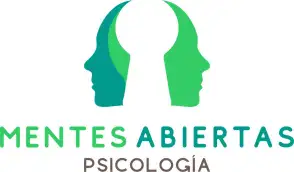Anxiety is a natural response of the body to perceived threatening situations. It is an adaptive mechanism that activates the autonomic nervous system to prepare the body and mind to face challenges. However, when anxiety becomes excessive or disproportionate, it can interfere with performance and emotional well-being.
Test anxiety, also known as evaluation anxiety, is a specific subtype of performance anxiety that occurs when a person faces an evaluation, whether academic, professional, or social. It is characterized by symptoms such as intense nervousness, self-critical thoughts, fear of failure, cognitive blocks, and exaggerated physiological responses like tachycardia, sweating, or tremors.
Studies have shown that test anxiety affects approximately 20-40% of students at some point in their academic life (Zeidner, 2007). However, this condition is not limited to the educational field; it also appears in job interviews, public presentations, and professional certification exams.
Causes of Evaluation Anxiety
From a neurobiological and psychological perspective, evaluation anxiety has multiple origins:
Test Anxiety vs. Interpersonal Anxiety
While both forms of anxiety share symptoms such as fear and avoidance, they differ in nature:
CharacteristicTest AnxietyInterpersonal AnxietyTriggerExams, evaluationsSocial situations, human interactionsCore FearFear of failure, not meeting expectationsFear of rejection, negative judgmentCommon SymptomsMental block, fatigue, exam avoidanceStammering, sweating, social withdrawalImpactPoor academic/work performanceDifficulties in personal relationshipsThe key difference is that test anxiety focuses on individual performance in a specific task, while interpersonal anxiety is more related to social approval and interactions.
10 Effective Techniques for Treating Test Anxiety
The treatment of test anxiety should be multidimensional, integrating cognitive, physiological, and behavioral interventions.
1. Cognitive-Behavioral Therapy (CBT)
Focuses on modifying catastrophic thoughts associated with performance. Techniques like cognitive restructuring help change irrational beliefs about failure (Hofmann et al., 2012).
2. Gradual Exposure and Systematic Desensitization
Patients are progressively exposed to evaluation situations, reducing their anxiety response over time.
3. Emotional Regulation Training
Psychoeducation on the functioning of the autonomic nervous system helps improve control over physiological activation.
4. Mindfulness-Based Therapy (MBSR, MBCT)
Studies have shown that mindfulness reduces evaluation anxiety by improving metacognition and tolerance to uncertainty (Zeidan et al., 2010).
5. Biofeedback Techniques and Heart Coherence
Biofeedback allows monitoring and regulating heart rate variability, promoting states of calm (McCraty et al., 2009).
6. Progressive Muscle Relaxation (Jacobson's Technique)
Reduces muscle tension associated with evaluation stress.
7. Diaphragmatic Breathing Techniques
Controlling breathing helps activate the parasympathetic system and reduce hypervigilance.
8. EMDR for Past Traumatic Experiences
EMDR is useful when test anxiety is linked to past events of failure or humiliation.
9. Acceptance and Commitment Therapy (ACT)
Helps reduce cognitive fusion with negative thoughts about performance.
10. Behavioral Modeling and Rehearsal
Practicing evaluation simulations improves confidence and decreases emotional activation.
Examples of Evaluation Anxiety and Intervention Strategies
How to Overcome Stage Fright and Prognosis
Stage fright is an extreme manifestation of test anxiety that occurs when a person must perform or speak in front of an audience. It can appear in oral exams, job presentations, public speeches, artistic performances, or even in social gatherings where ideas need to be expressed.
Symptoms of Stage Fright
Stage fright activates the hypothalamic-pituitary-adrenal (HPA) axis, triggering a fight-or-flight response that generates intense symptoms:
- Physiological: Tachycardia, difficulty breathing, excessive sweating, tremors, nausea, dizziness.
- Cognitive: Catastrophic thoughts like "I'm going to embarrass myself," "I will forget everything," "I will freeze."
- Behavioral: Avoidance of public speaking, total mental block, inability to articulate ideas, or escaping the situation.
This phenomenon is so common that even experienced public figures, such as musicians, actors, and politicians, have reported feeling stage fright before their performances.
Effective Strategies to Overcome Stage Fright
To address stage fright, it is essential to combine physiological regulation techniques, cognitive restructuring, and progressive exposure.
1. Cognitive Restructuring
Helps modify automatic negative thoughts about one’s ability. Key questions include:
- What evidence do I have that I will actually embarrass myself?
- How can I interpret this situation in a less threatening way?
- What is the worst that could happen, and how would I handle it?
2. Physiological Regulation Training
When the body enters a state of hypervigilance, it is essential to activate the parasympathetic system through:
- Diaphragmatic breathing: Inhaling deeply for 4 seconds, holding for 4 seconds, and exhaling for 6 seconds.
- Heart coherence techniques: Synchronizing breathing with heart rate to induce calm.
3. Progressive Exposure Technique
Gradual exposure to anxiety-provoking situations is key to desensitizing the fear response:
- Reading a text aloud alone.
- Recording an audio and listening to it for improvements.
- Practicing in front of a mirror.
- Presenting to a trusted person.
- Expanding the audience progressively.
4. Visualization and Mental Rehearsal
Studies show that imagining success in a challenging situation can reduce fear activation (Lang, 1977).
5. Grounding and Physiological Anchoring Techniques
When stage fright is activated, grounding techniques help regain control:
- Feeling the contact of feet with the ground.
- Pressing palms together.
- Naming 5 things you can see, 4 things you can touch, 3 things you can hear.
Prognosis and Expected Improvement
Treatment for stage fright has a highly positive prognosis. Research suggests that CBT, gradual exposure, and physiological regulation interventions reduce anxiety in 70-85% of cases (Hofmann et al., 2012).
Overcoming stage fright does not mean eliminating anxiety completely but learning to manage it and act despite it. The key lies in facing the situation gradually with effective strategies and fostering self-compassion rather than perfectionism.


